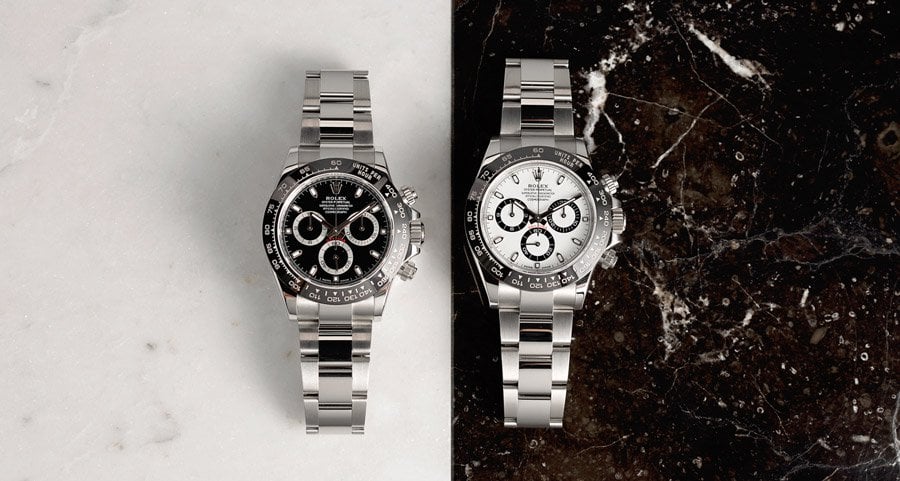Rolex Daytona History
Among all the remarkable watches that Rolex has produced throughout their long and illustrious history, possibly no timepiece is more celebrated by enthusiasts and pursued by collectors than the Rolex Daytona. In recent years, the Daytona has become synonymous with Rolex chronographs; however Rolex was manufacturing watches with chronograph complications for several decades before the Daytona name became a mainstay in their catalog. As of 2019, the newly launched Daytona model 116500 retailing at $12,400 is still in huge demand with some AD's boasting a multi-year waiting list to buy one.
A Rolex Daytona History Lesson
Rolex first started experimenting with mechanical chronographs during the 1930s, but it was not until 1963, with the introduction of the reference 6239, that an actual name was given to their chronograph line of watches.
Although many consider this reference to be the first Daytona, it was not until almost 1965 that the "Daytona" name actually made its debut appearance on the dial. In those two years before the addition of the Daytona name, Rolex’s chronograph line was known simply as the "Cosmograph" - a name that still remains on the Daytona dials that are manufactured today.
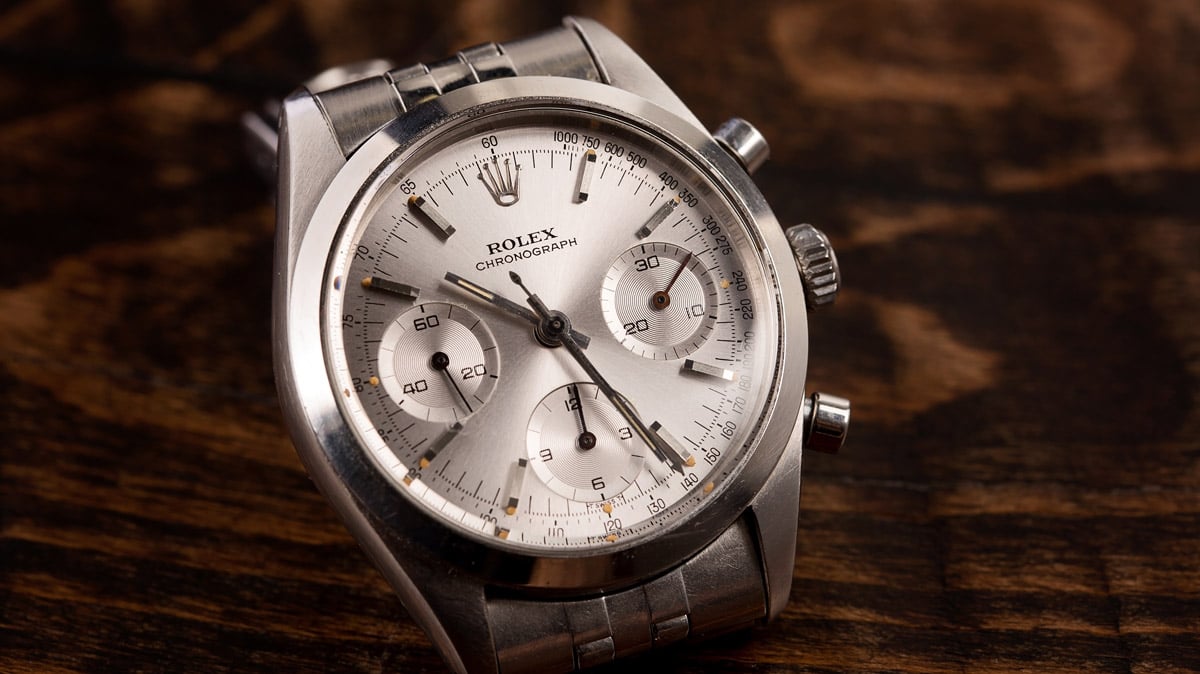
An evolution of the ref. 6238, the redesigned ref. 6239 marked the first time in Rolex history that inverted colors were used for the chronograph registers - black on silver, or white on black, depending on the variation previous Rolex chronograph dials were entirely monochromatic). Additionally, the ref. 6239 also marked the first time that the tachymeter scale was engraved on the bezel, rather than printed on the surface of the dial - something that has since become one of the defining characteristic of Rolex's Daytona line of watches.
When the "Daytona" name first appeared on the dial in 1964, it was printed under the word Cosmograph. However by 1967, the Daytona signature had migrated to the top of the 6 o'clock sub-dial, where it has remained ever since.
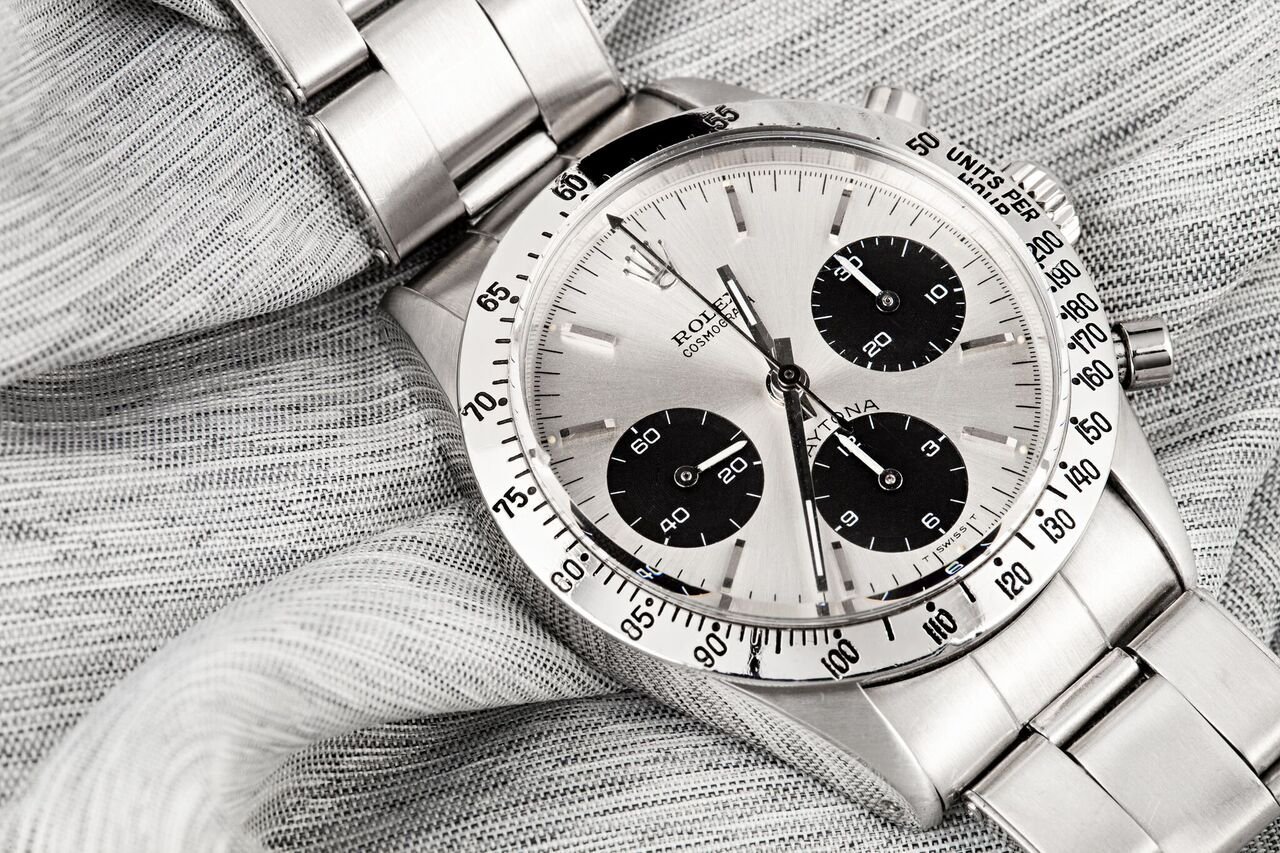
Changes Through The Ages
Although relatively minor, the addition of contrasting sub-dials and the relocation of the tachymeter scale to the bezel gave the watch a significantly different visual appearance. These features provide the ref. 6239 with a much more chunky and sports-oriented look than the Rolex chronographs that preceded it. These two characteristics were carried over onto subsequent references, and every Daytona that Rolex has manufactured since the ref. 6239 has had its tachymeter scale on its bezel rather than its dial.
In addition to pre-dating the arrival of the Daytona name, the ref. 6239 also pre-dates the implementation of screw-down chronograph pushers. Much like the very first Rolex chronographs, the ref. 6239 utilizes pump-style pushers that offer significantly less water resistance than the screw-down style that is used on the "Oyster" Daytona, which first made an appearance with the reference 6240. Designed with function first, screw-down chronograph pushers are among the core design traits that have remained an integral part of the Daytona’s defining essence, and can still be found on the contemporary Daytona watches that Rolex manufactures today.
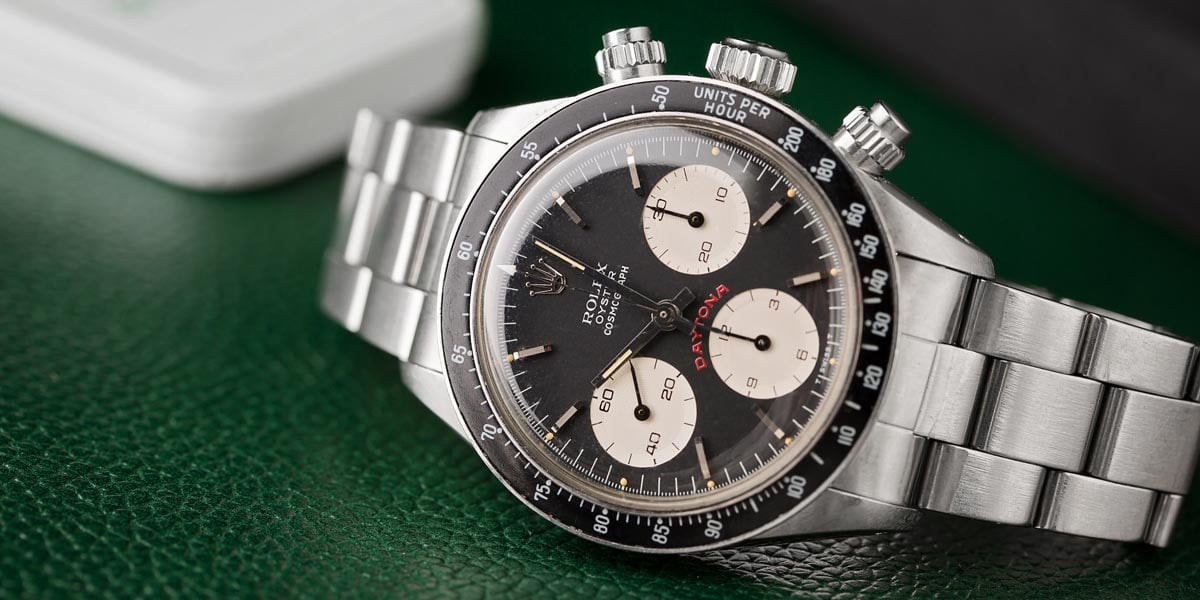
The Legendary Paul Newman Dial
During the production period of the ref. 6239, Rolex also introduced the unique and now much-loved "exotic dials" that ended up being carried forward to a number of other vintage Daytona references over the years. These dials were produced by Singer, a well-known dial manufacturer of the time that also produced dials for Heuer and a variety of other prominent brands of the same era.
Thanks to well-documented wear and ownership by the legendary Paul Newman, these exotic dials (which were originally considered undesirable), eventually came to be known as "Paul Newman" dials, and have since gone on to become significantly more desirable (and valuable) than their comparable standard dial siblings.
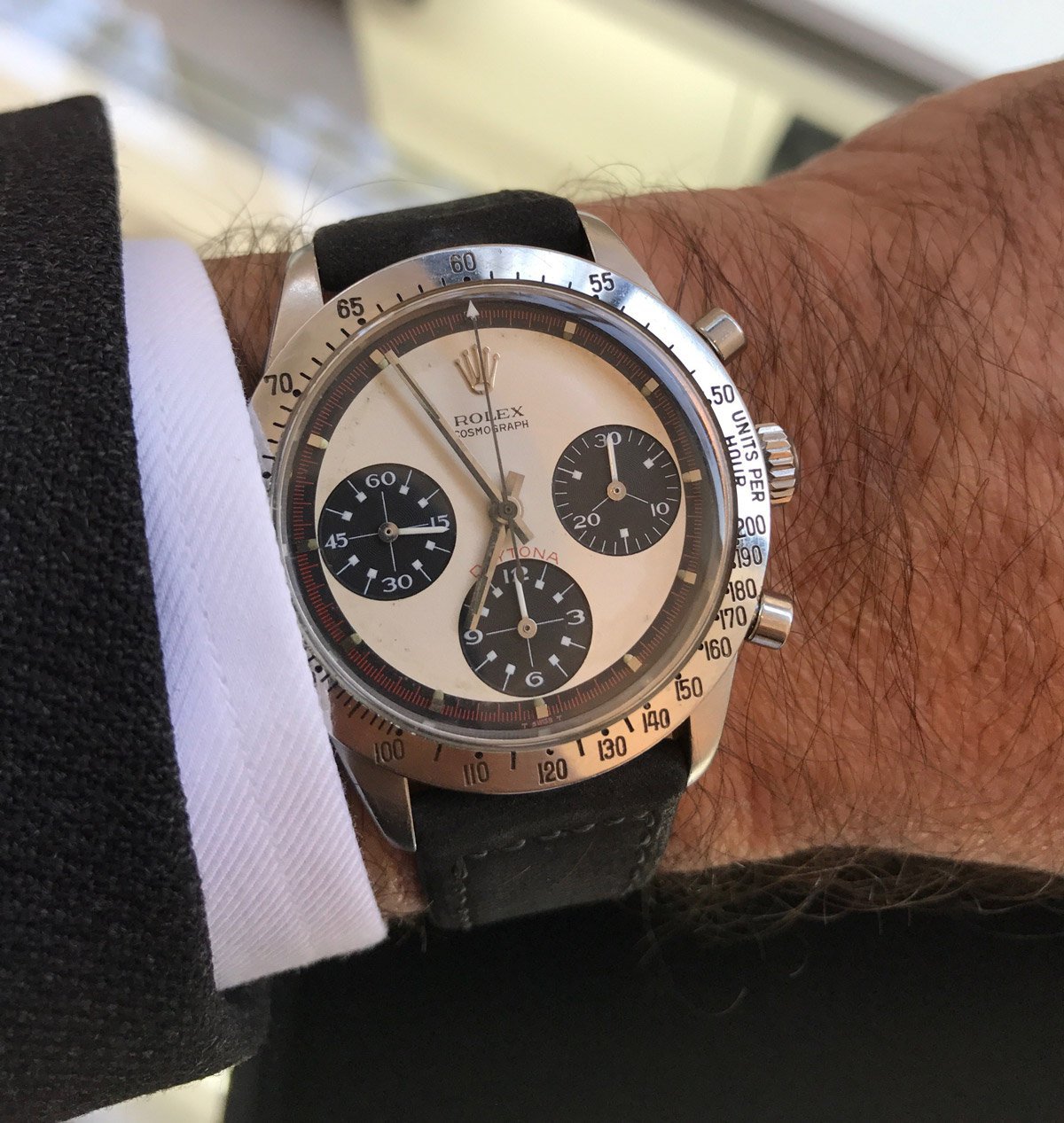
Although prices for vintage Daytona watches have been on the rise for a number of years, the $17.8 Million sale of Paul Newman's personal Daytona ref. 6239 in October of 2017 helped further bolster the market for Daytona watches, both new and old alike. The overwhelming demand for Daytona watches has resulted in pre-owned prices exceeding retail prices. Additionally when it comes to vintage Daytona references - particularly those with rare or desirable characteristics (such as a Paul Newman dial) - it is n0t uncommon for these remarkable watches to sell for well into the six and even seven-figure price range.
It's estimated that only one in roughly every 20 vintage Daytona watches was sold with a Paul Newman dial, and many were replaced with standard dials during repairs or routine service. Consequently, scarcity is one of the primary factors that further fuels the insanely-high levels of demand.
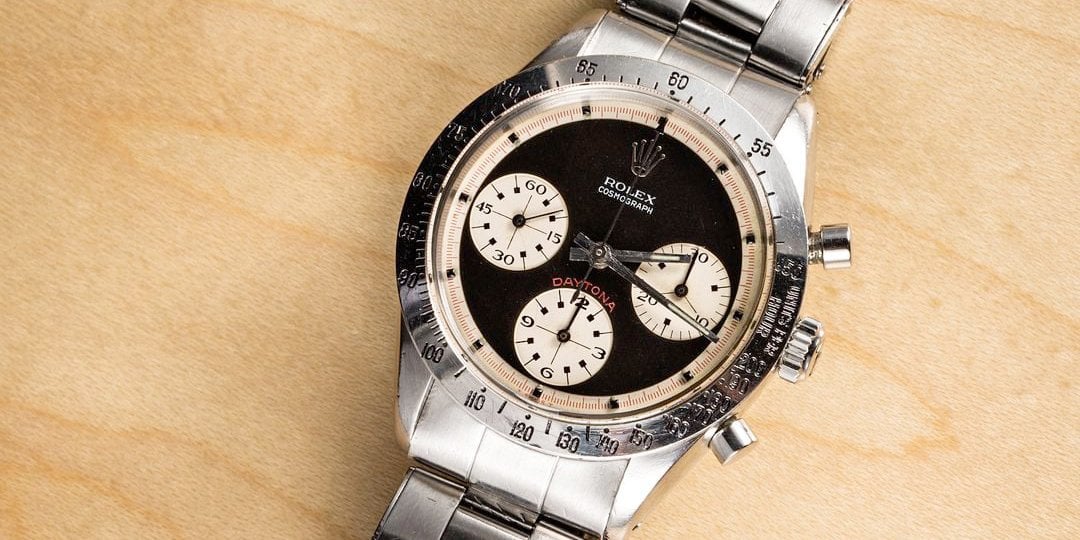
A Self-Winding Movement
Fast forward a bit to 1988, which marks the first real major change in the production of the Daytona: the implementation of a self-winding movement. Being manually wound was the achilles heel of the Daytona throughout the Quartz crisis, and Rolex took a relatively long time updating their chronograph with an automatic caliber.
The change finally occurred in 1988 with the arrival of the Daytona ref. 16520; however a self-winding movement was just one of a number of important updates that accompanied the new model. Its case grew to the current 40mm diameter, and its dial was redesigned to feature different hour markers and sub-dials with contrasting timing tracks rather than fully contrasting sub-dials. Additionally, the crystal on the ref. 16520 was made from synthetic sapphire, while the crystal on previous iterations was constructed from acrylic.
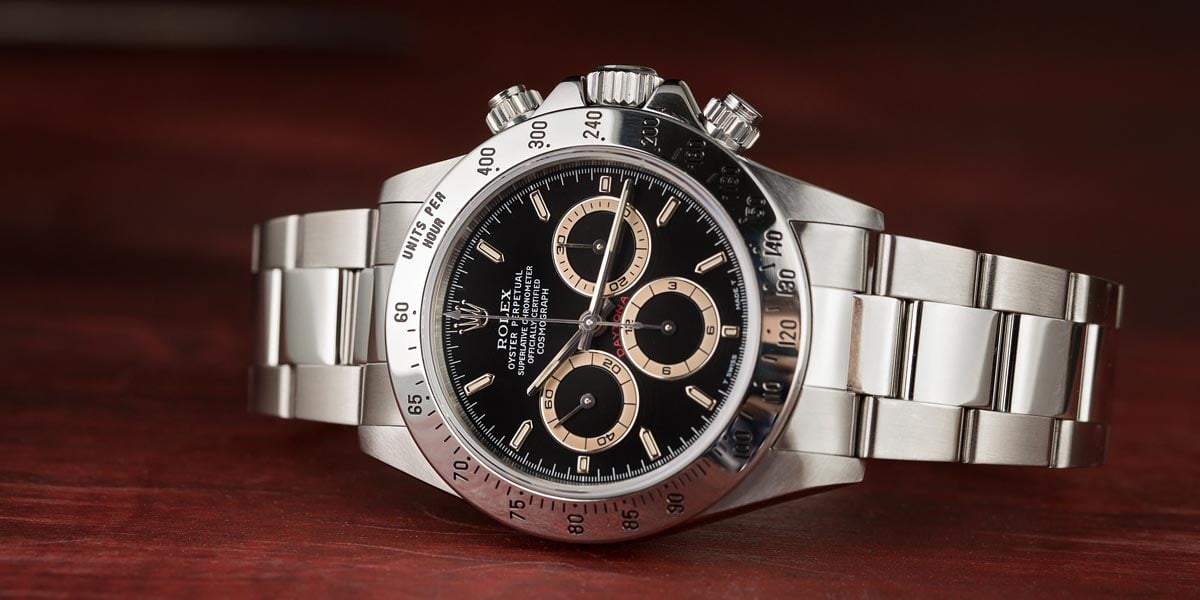
Despite finally fitting the Daytona with a self-winding movement, the automatic caliber used in the ref. 16520 was not an entirely in-house creation, but rather one based on the Caliber 400 movement from the Zenith El Primero. Due to the origin of the base movement used in this version of the Daytona, many collectors now refer to this generation as the "Zenith Daytona" as a means to help distinguish it from the later-era Daytona watches that use in-house movements.
Although Zenith supplied the base movement for the red. 16520 Daytona, it was heavily modified by Rolex before being fitted inside their watches. Roughly half of its components were either replaced or altered, and it was modified to run at a slower 4hz frequency rather than the 5hz of the El Primero. This marked the era of Rolex bringing the Daytona up to the modern standard; however despite the numerous updates and innovations, the Daytona was still reliant on a third-party, as it did not feature a true in-house manufacture caliber.
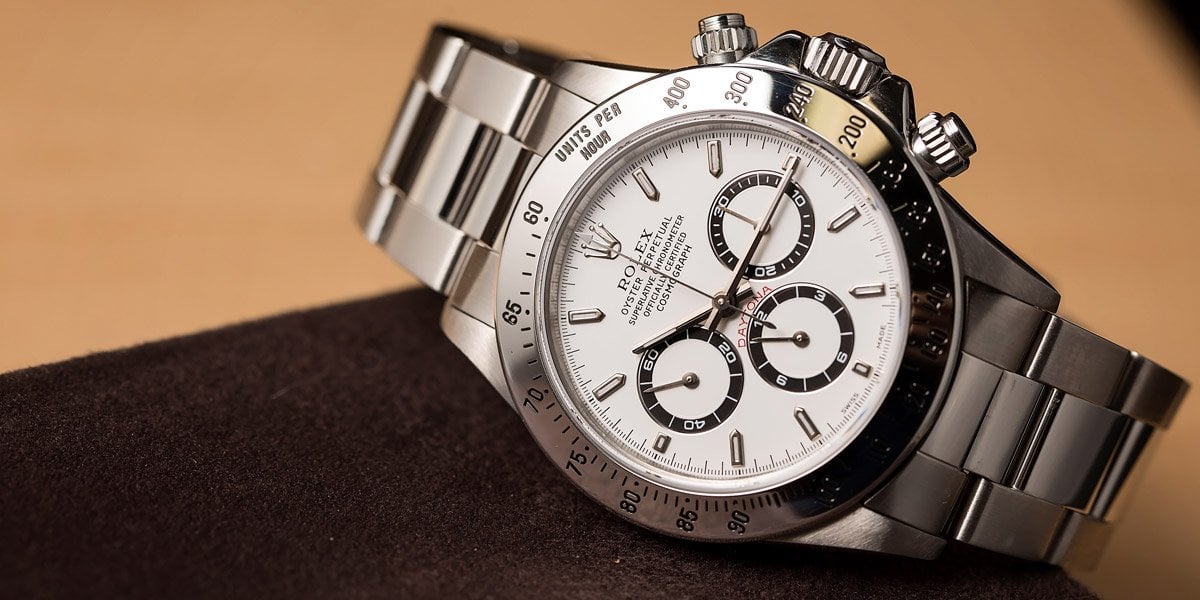
Modern Evolutions
In 2000, just 12 years after the release of the Zenith Daytona, Rolex introduced the ref. 116520, which marked the long-awaited introduction of a true in-house movement to the Rolex Daytona. Known as the Caliber 4130, this fully integrated, vertical clutch chronograph was (and still is) a masterfully executed movement, designed with longevity and future serviceability in mind.
By reconfiguring the sub-dials, the movement's gear-train could be made a touch less complex. In Addition to offering greater reliability, the simplified design allowed for a larger mainspring barrel to be fitted, which provides the watch with an increased power reserve of 72 hours.

The most recent update to the Rolex Daytona was a relatively modest and more-or-less superficial one compared to many of its previous changes and evolutions. In 2016, Rolex unveiled the ref. 116500LN, which swapped out the steel bezel of the ref. 116520 for one constructed from Cerachrom (Rolex's proprietary ceramic compound). Despite being functionally identical to its predecessor, the addition of a black ceramic bezel on the ref. 116500LN ignited excitement among collectors and enthusiasts.
Additionally, the ref. 116500LN was not the first time that a Cerachrom bezel was fitted to a Rolex Daytona. To celebrate the 50th anniversary of the Daytona back in 2013, Rolex unveiled a solid platinum version of their iconic chronograph that featured a chocolate brown ceramic bezel. However, the stainless steel construction of the ref. 116500LN guaranteed a much more accessible price point, and upon its release, it immediately became the international must-have watch of the year.
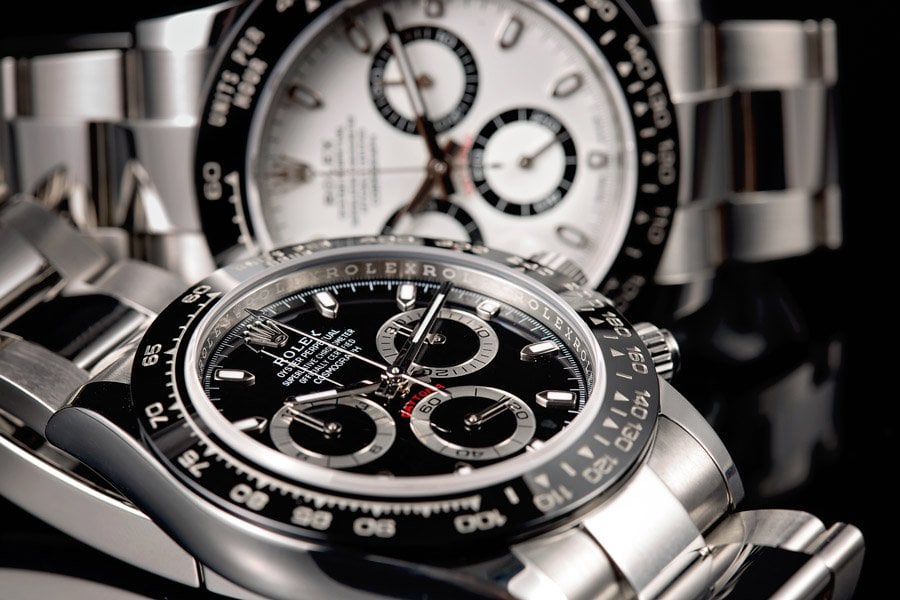
Before the very first examples of the ref. 116500LN Daytona even started shipping, nearly every single authorized retailers already had a multi-year-long waitlist for the watch. Although it has now been more than three years since it was first announced, the massive waitlists for the stainless steel ceramic Daytona still remain, and it is regarded as one of the most desirable and sought-after watches available. Additionally, this trend of mega-desirability and supply not meeting demand has only continued. In recent years, every new stainless steel sports watch that Rolex releases is immediately met with a waitlist that spans several years in length.
Since this last evolution, the Rolex Daytona has stayed more-or-less consistent, although a handful of luxury-oriented novelties have been released, such as Everose "Rainbow Daytona" that was unveiled at Baselworld 2018. Additionally, waitlists for the ref. 116500LN have also stayed consistent, and the Rolex Daytona remains one of the most exclusive and highly-coveted luxury watches on this planet.
